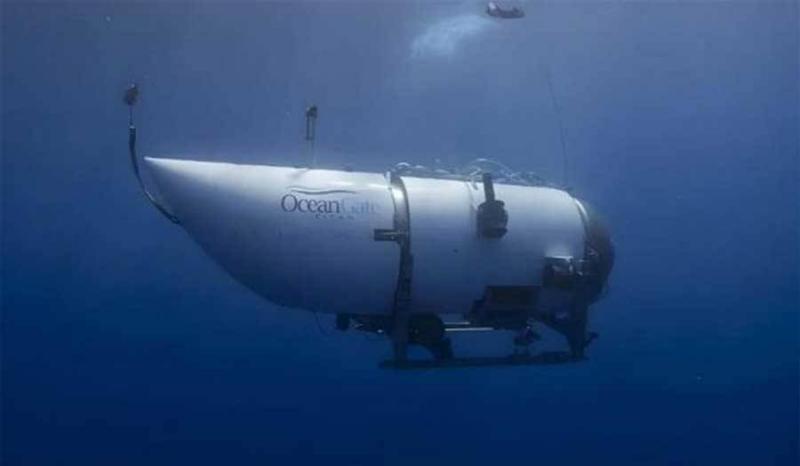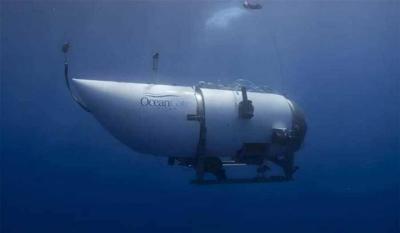Relatives and colleagues mourned the five individuals who died when the "Titan" exploratory submersible crashed in the North Atlantic during a deep-sea descent to the Titanic wreck, raising questions from experts about safety regulations for such expeditions. The deceased include Stockton Rush, founder and CEO of OceanGate Expeditions, who was also piloting the submersible, British billionaire and explorer Hamish Harding (58 years old), Pakistani-born businessman Shahzada Dawood (48 years old) and his son Suleman (19 years old), both British nationals, and French explorer and oceanographer Paul-Henri Nargeolet (77 years old).
The cost of the exploratory trip to the Titanic wreck organized by OceanGate since 2021 is $250,000 per person, according to the company's website. OceanGate stated, "These men were true explorers sharing a unique adventurous spirit and a profound passion for exploring and protecting the oceans of the world... Our hearts go out to these five souls and every member of their families during this tragic time."
The "British Egan Trust" issued a statement on behalf of the Dawood family expressing profound sorrow over the tragic loss of Shahzada and his beloved son Suleman, who embarked on a journey to visit the legendary Titanic wreck in the depths of the Atlantic Ocean. Strathclyde University in Scotland, where Suleman Dawood studied, also released a statement of condolence.
British Titanic explorer Dick Barton praised the work of his friend Nargeolet but pointed to concerns raised regarding the design and maintenance of the submersible. He said, "Everyone is wise after the event, but as we had heard before, unfortunately, there were many signs of trouble."
Questions about the safety of the Titan were raised during a 2018 seminar for submarine industry experts and in a lawsuit filed by OceanGate's former marine operations chief, which was later settled that year. The intensive global media coverage of the search operation largely overshadowed attention on the repercussions of a much larger maritime disaster resulting from a migrant boat sinking off the coast of Greece last week, which resulted in hundreds of fatalities.
**International Efforts**
Teams from the United States, Canada, France, and Britain spent days scouring thousands of square miles of open seas by air and sea in search of any sign of Titan. Mogher stated that it was too soon to determine when the incident occurred with Titan. He mentioned that sonar detection equipment in the area for more than three days did not pick up an explosion sound.
However, the wreck site relatively close to the Titanic and the timing of the last contact with the submersible seem to indicate a disaster occurred near the end of the descent journey on Sunday. Separately, the U.S. Navy acknowledged that an analysis of its acoustic data had revealed an "anomalous event consistent with an internal or external explosion" near the submersible's location when communication was lost with the support vessel. A senior Navy official stated in a comment reported first by the Wall Street Journal, "Although this information is not definitive, it was immediately shared" with mission leaders.
The newspaper quoted unnamed U.S. defense officials stating that the sound was captured by a highly classified system designed to detect enemy submarines. In an interview with Reuters on Thursday, James Cameron, director of Titanic who took the risk of diving to the wreck, said he learned about the acoustic analysis results within a day and understood what they indicated. He added, "I sent emails to everyone I know and said we lost some friends. The submersible imploded from the inside. It is lying in pieces on the seabed now. I sent the message on Monday morning."
**Manufacturing Regulation**
Stefan Williams, a professor of marine vehicles at the University of Sydney, suggested that there might be calls for more regulatory rules and a better understanding of how such vehicles are designed, manufactured, and certified for use in deep-sea environments. Scientist and journalist Michael Guillen, who returned safely from an exploratory trip in 2000 that was stranded in part of the wreckage, said, "Whether we find the vessel or identify what went wrong, we need to stop... We need to stop and ask this question: Why do we want to go to the Titanic wreck, and how do we get there safely?"
The wreck of the Titanic, which collided with an iceberg and sank on its maiden voyage in 1912, resulting in the drowning of more than 1,500 people, lies approximately 1,450 kilometers east of Cape Cod, Massachusetts, and 640 kilometers south of St. John's in Newfoundland, Canada.




